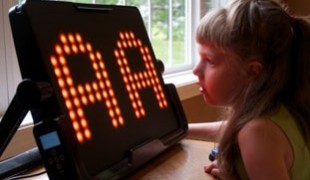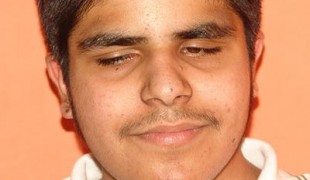- 5042
- 385
- 5
- 4
- 0
- Help Ukraine
About the solution
Louis was three years old when he became blind after being injured in the eye while playing at his dad’s shop. Despite all medical efforts, an eye infection developed on both eyes, causing him complete bilateral blindness.
Back then, the reading system for the blind simply consisted of raised letters that could be traced with a finger, which was slow and difficult to use.
Another system, called ‘night writing’, had been created for the military to communicate in the darkness, after a request from Napoleon. It consisted of raised dots, but was deemed too complicated. However, Louis’ teacher, Dr Alexandre Francois-Rene Pignier, thought the ‘night writing’ system could be used for blind people, and so he invited its inventor, Charles Barbier, to give a presentation about it to his class.
There were some issues with the ‘night writing’ system, as it was a very large matrix of dots, which made it complicated to use.
Despite that, the idea inspired Louis, who was then a teenager, to experiment with the matrix using paper, a slate, a stylus and punching holes.
At 16, in 1825, Louis, came up with a new tactile writing system, Braille, which consisted of six dots distributed in two parallel rows, where each set of rows represented a letter. This was simpler than the ‘night writing’ system, but still allowed enough combinations for all letters of the alphabet and punctuation marks. Furthermore, it allowed translation into different languages. Also, because its configuration made the dots easier to trace with the fingers, it made the reading process much faster.
Louis received the support of his teacher, Dr Pignier, who introduced the new system to his other blind students. However, upon doing this, he was dismissed from his job.
Later on, Louis became a teacher himself, and spread this method to his students. He also published a book about the new code and demonstrated his innovation at the Exposition of Industry.
Braille was first adopted by a school in Amsterdam. Eight years later, and two years after Louis died, the National Institute for Blind Youth, where Louis used to work, finally made the Braille system official and, by the end of the 19th century, most of the world had adopted it. However, the U.S. did so only in 1916.
Nowadays, Braille is a well-known and widespread writing and reading system for the blind, and a few variations have been developed based on the original model:
In Grade 1 Braille every letter is written out.
Grade 2 Braille combines letters and uses certain letters for words, such as 'b' for 'but'; and 'y' for 'you'.
Grade 3 Braille corresponds to more personal shorthands, which are usually not found in publications.
Adapted from: http://bit.ly/2m5bUgI
https://www.youtube.com/watch?v=sqQ3gdE7ks0
This solution shall not include mention to the use of drugs, chemicals or biologicals (including food); invasive devices; offensive, commercial or inherently dangerous content. This solution was not medically validated. Proceed with caution! If you have any doubts, please consult with a health professional.
DISCLAIMER: This story was written by someone who is not the author of the solution, therefore please be advised that, although it was written with the utmost respect for the innovation and the innovator, there can be some incorrect statements. If you find any errors please contact the patient Innovation team via info@patient-innovation.com
-
-
571
-
0
-
8492

Mother invents device to help hearing and visually impaired daughter
COMMUNICATION: Communicating, whether by speaking, listening, or other means
Reading
Studying
Blindness
Educational/Leisure device (book, toy, game...)
App (Including when connected with wearable)
Vision problems
Regaining sensory function
Promoting self-management
Improving Speech and Communication
Caregiving Support
Ophthalmology
United States
-
-
-
493
-
0
-
7059

Graduates team creates an app to help visually impaired in their education
Studying
Reading
COMMUNICATION: Communicating, whether by speaking, listening, or other means
Blindness
Assistive Daily Life Device (to help ADL)
App (Including when connected with wearable)
Online service
Vision problems
Promoting self-management
Promoting inclusivity and social integration
Improving Speech and Communication
To improve Treatment/Therapy
Raise awareness
Ophthalmology
India
-
-
-
368
-
0
-
4263

Software to help blind people learn science
COMMUNICATION: Communicating, whether by speaking, listening, or other means
Studying
CAREGIVING
Blindness
App (Including when connected with wearable)
Strategy/Tip
Assistive Technology access
Vision problems
Regaining sensory function
Promoting self-management
Preserving Organ Function
Caregiving Support
Occupational Medicine
Ophthalmology
United States
-
 en
en